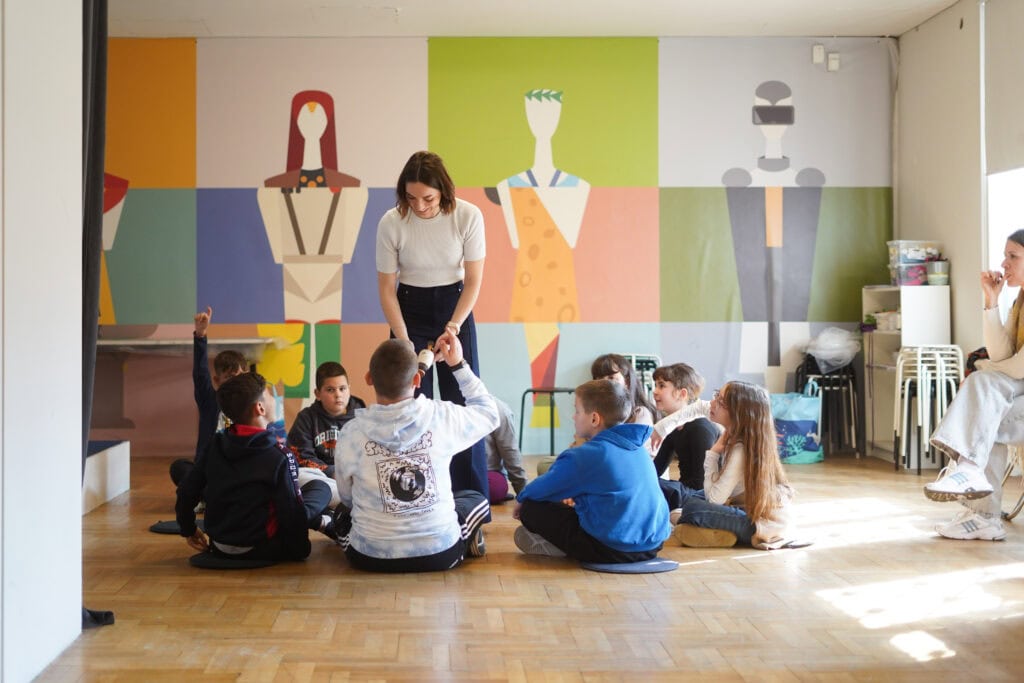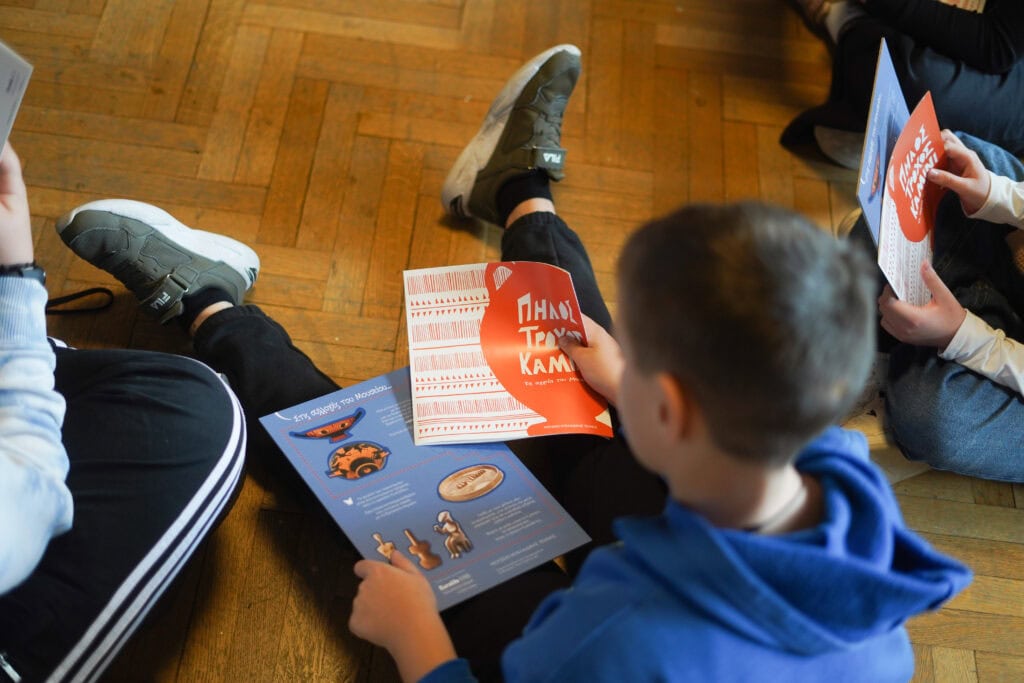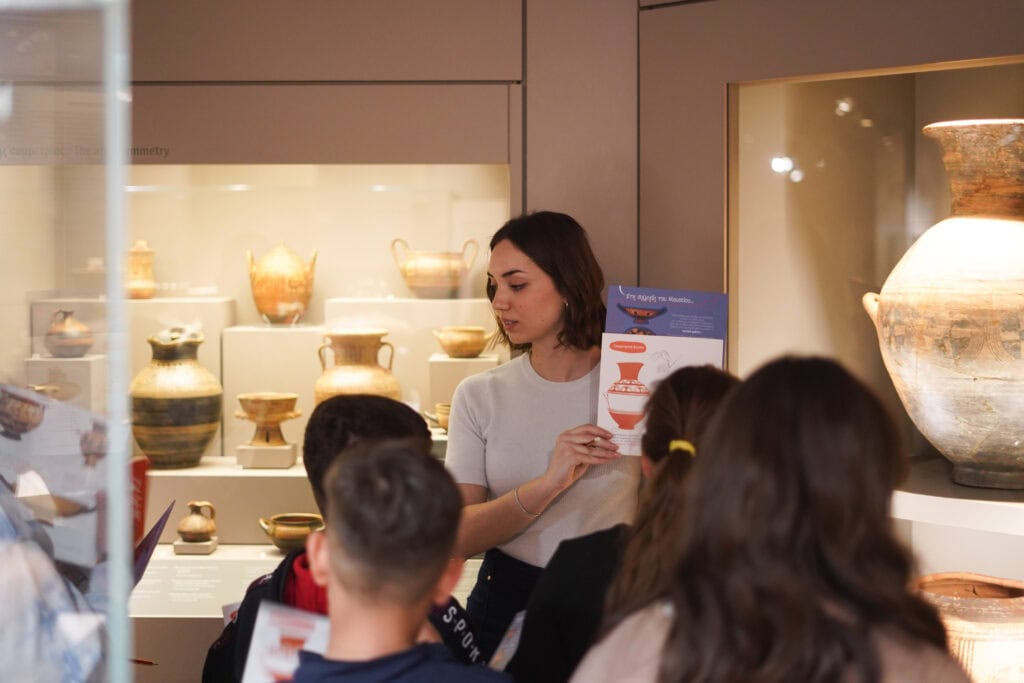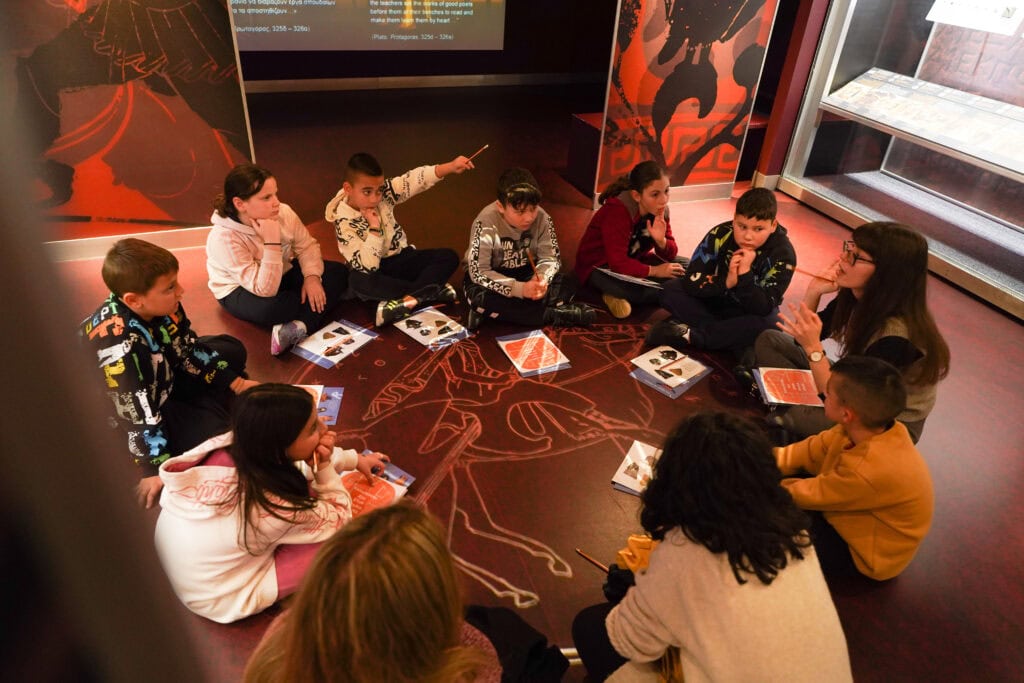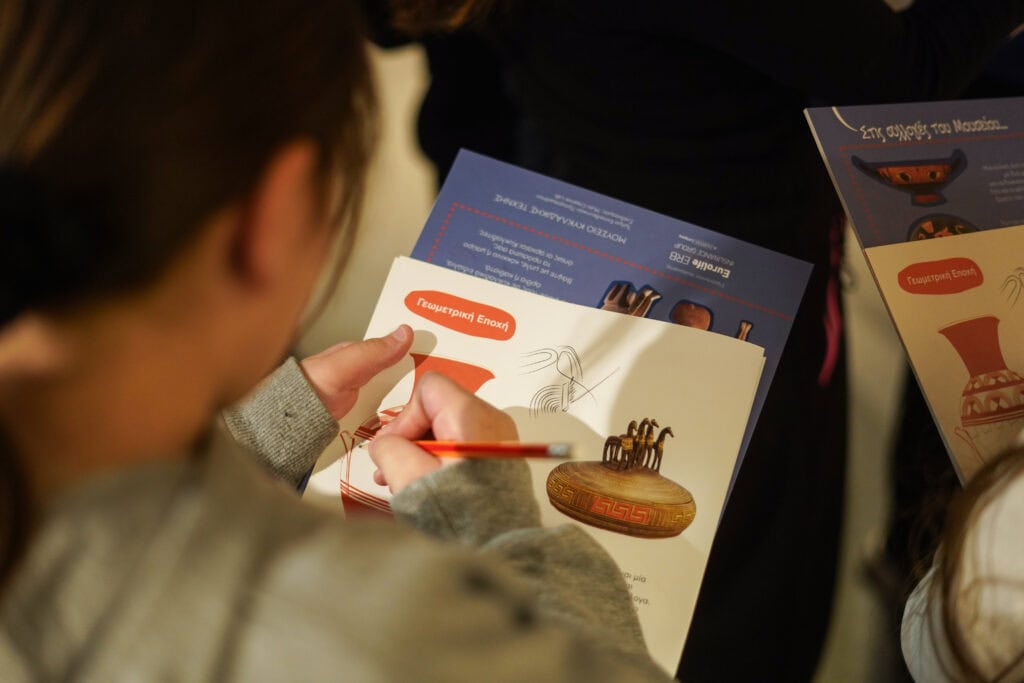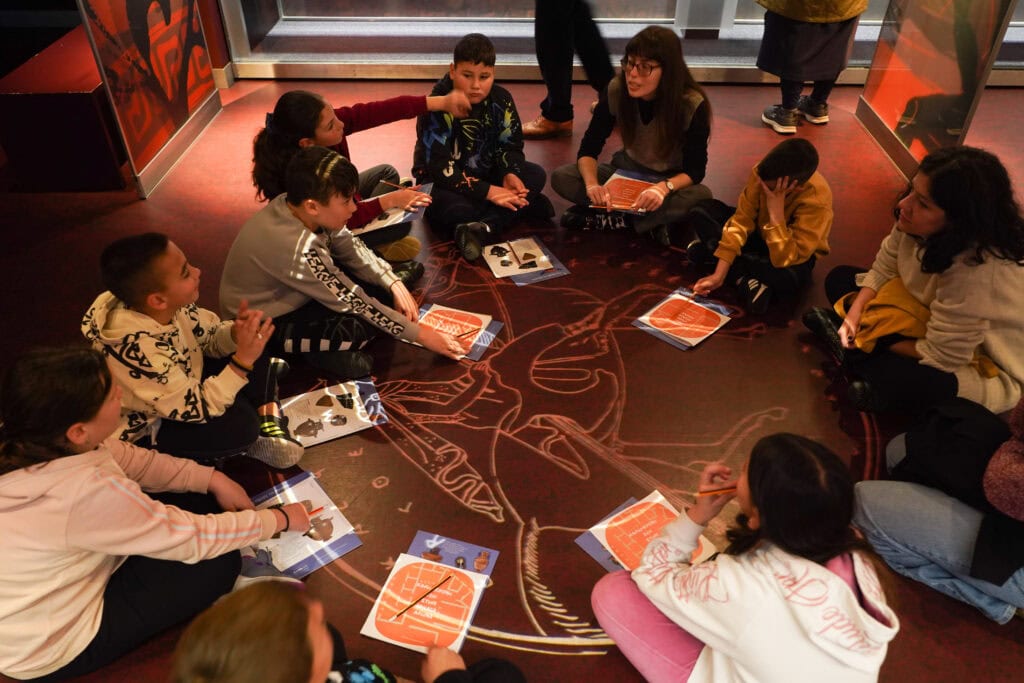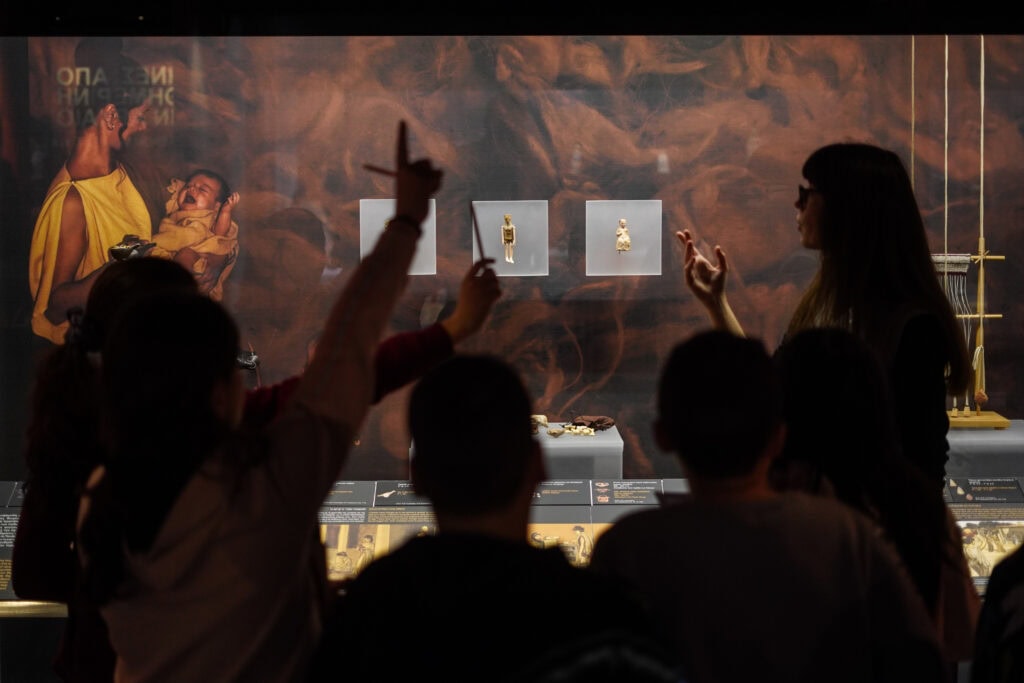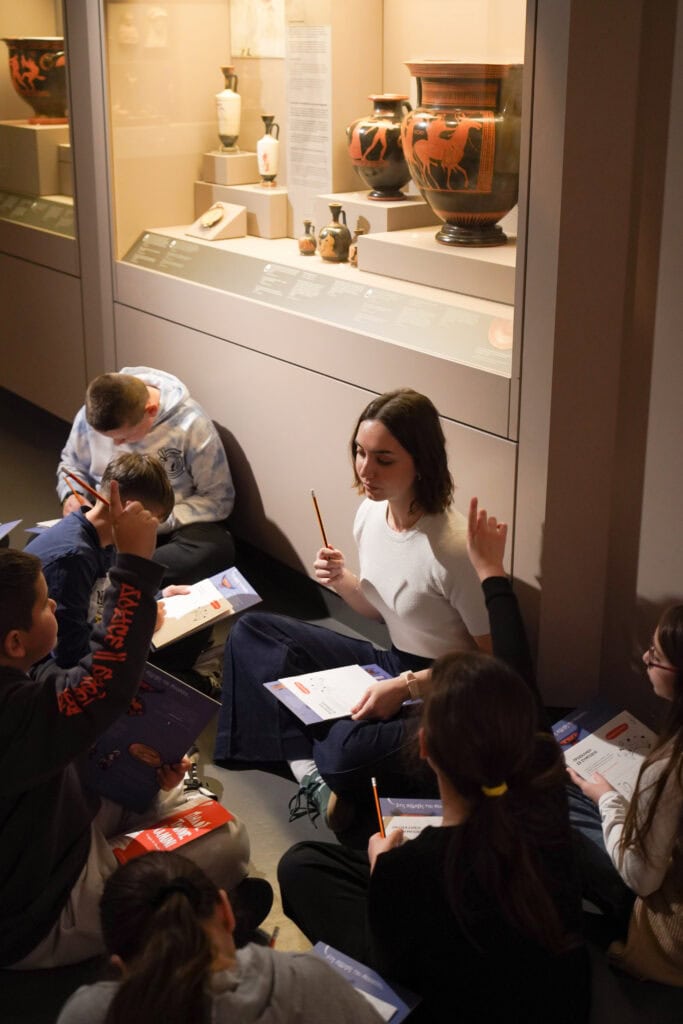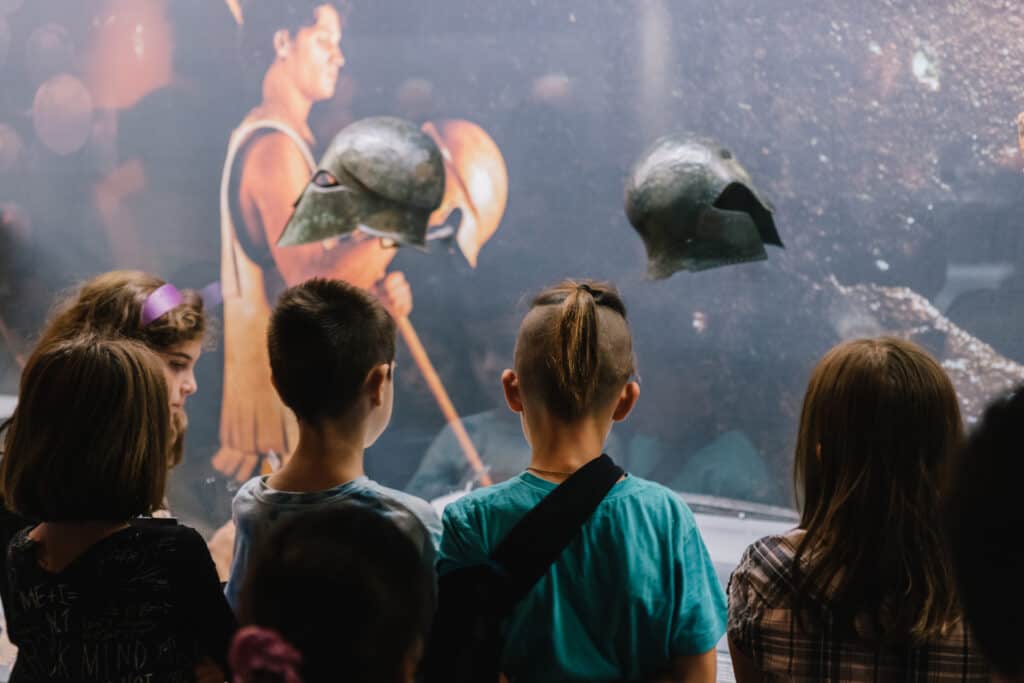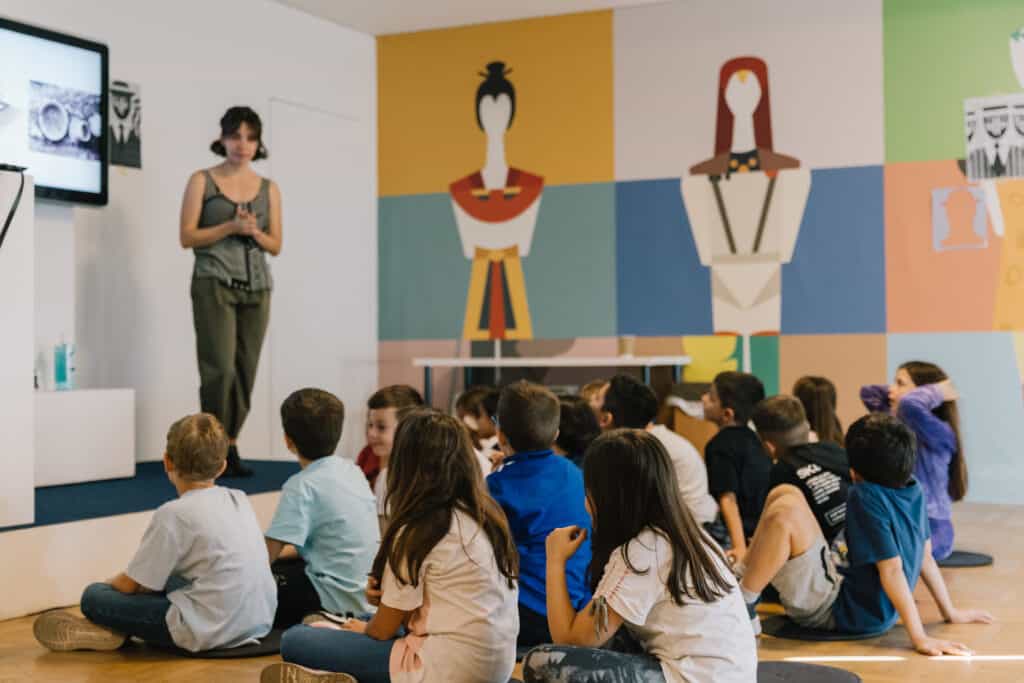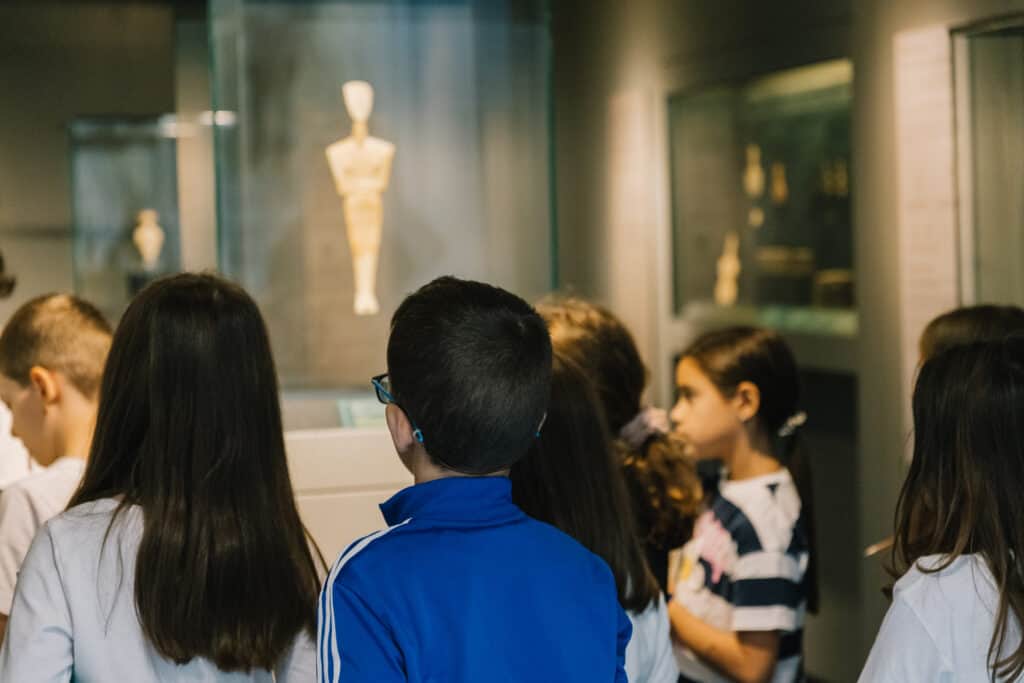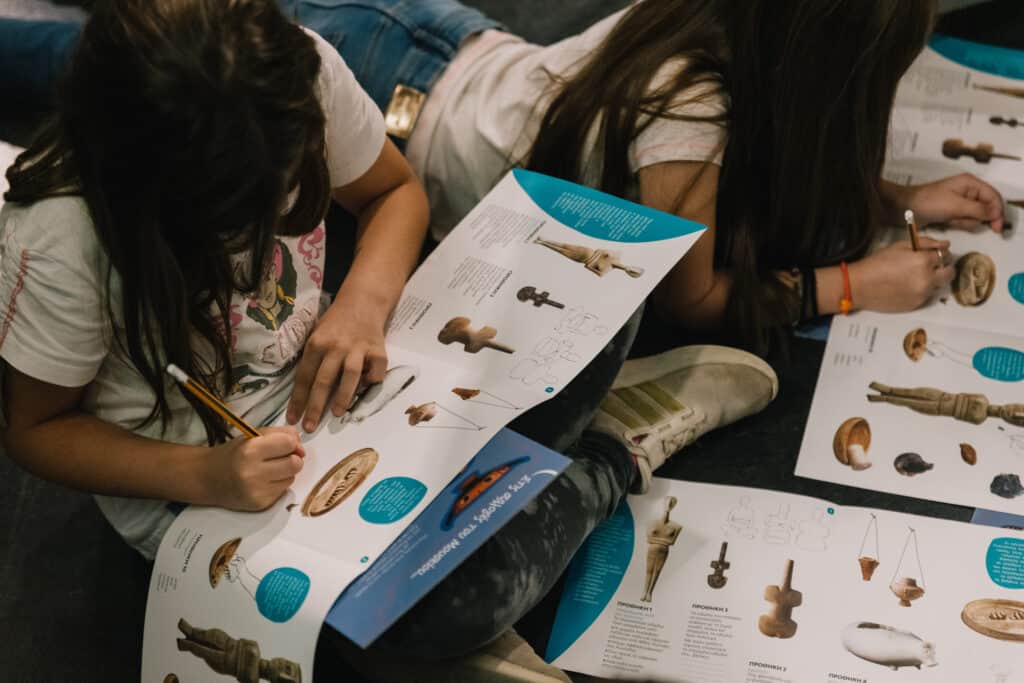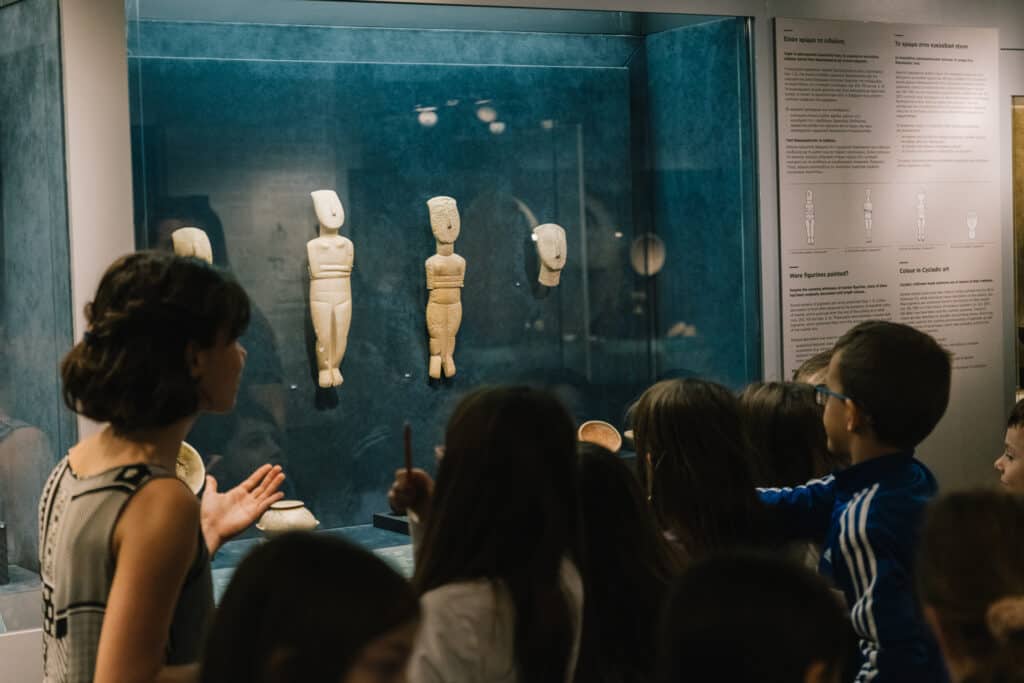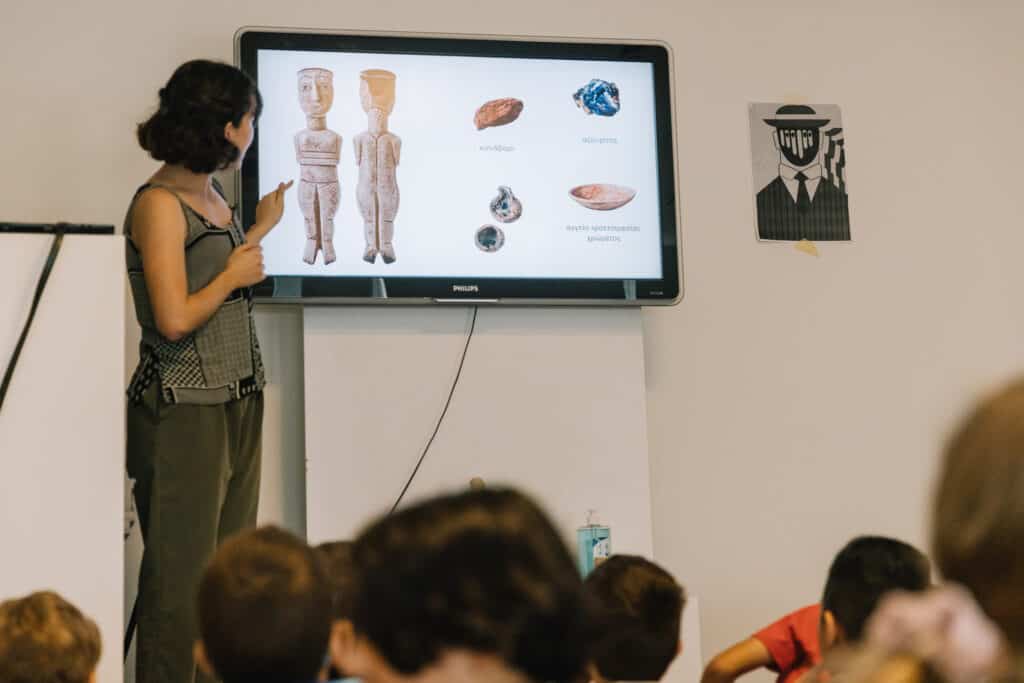Education for all, at the Museum
EDUCATION
COMMUNITY PROGRAMS
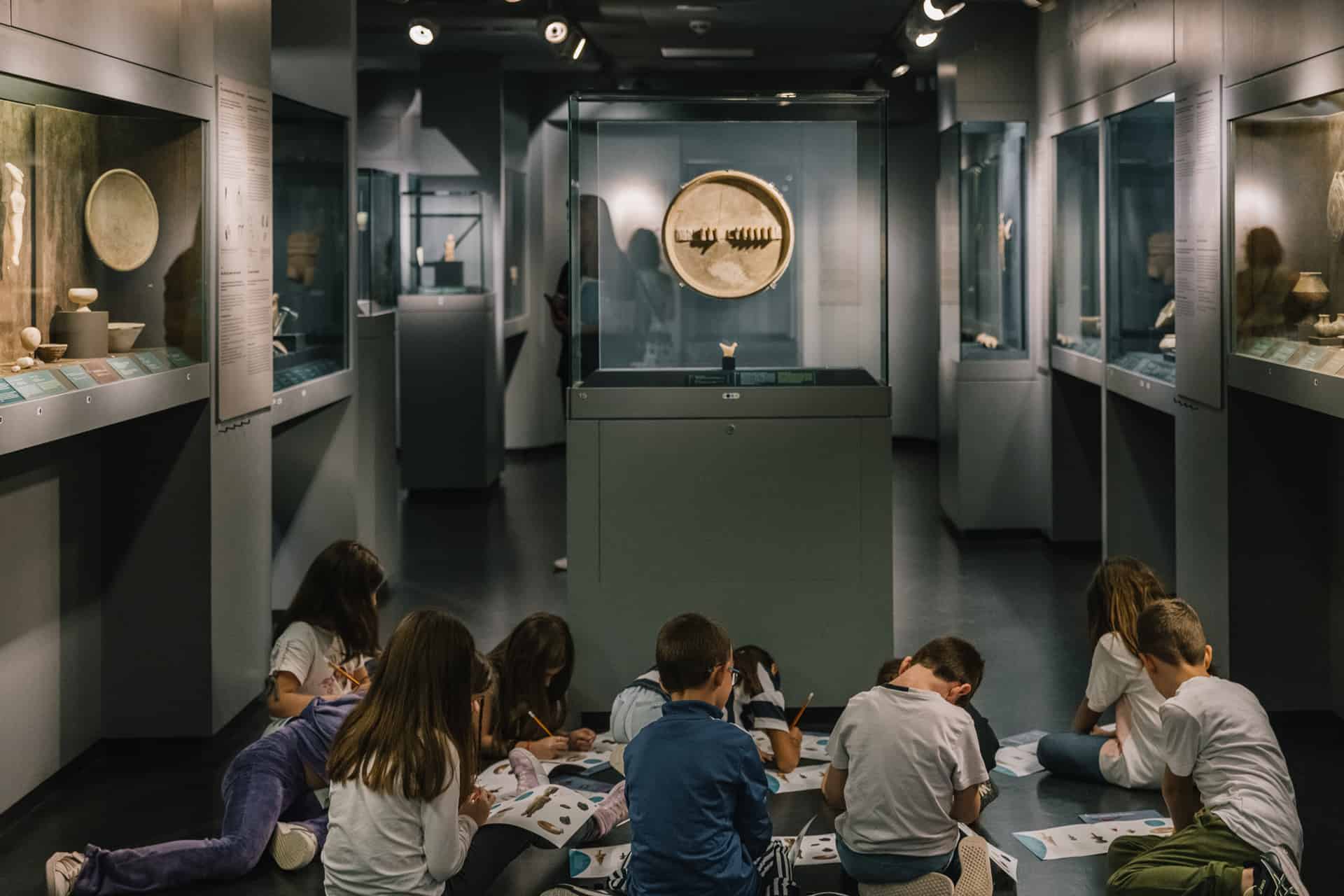
THE PROGRAM
It provides free educational programs in the Museum’s permanent collections for students of the third and fourth grade as well as free transportation.
The educational programs are linked to the school curriculum of the participants while the are designed according to their needs. The visits enable students to get in touch with ancient culture and live the unique museum experience that will familiarize themselves with the Museum’s world and its exhibitions.
The program was launched in November 2023 and it is implemented once per week. Approximately 1500 students from socially vulnerable areas participate. It involves primary school students from remote areas outside the city center, such as Ano Liosia, Aspropyrgos, Megara, Villia, as well as schools hosting students from different nationalities in the center of Athens and elsewhere, giving them the opportunity to visit a museum and participate in an educational program.
The selection of schools is made in close cooperation with the Ministry of Education and the respective Sub-Directorate of Primary Education.
The program is implemented with the support of the Antonios & Ioannis Angelicoussis Foundation.
IMAGES
PROGRAM SUBJECTS
“Getting to know the Cycladic figurines”
“Images from Mythology”
“Daily life in ancient Athens”
“Getting to know the Museum’s vases”
MORE

EDUCATION
EDUCATIONAL PROGRAMS
Families & kids

EDUCATION
EXTENTED UNTIL JUNE 5
International Kids’ Art Contest 2025


